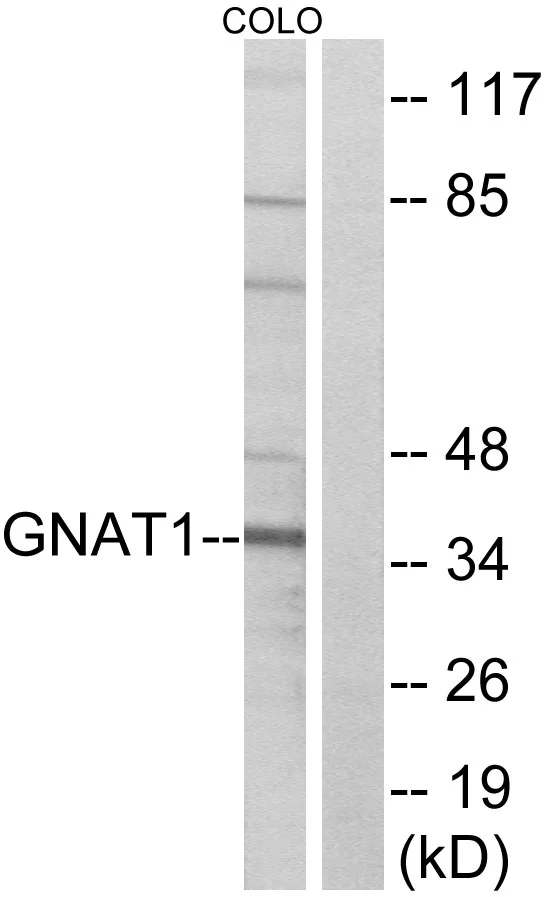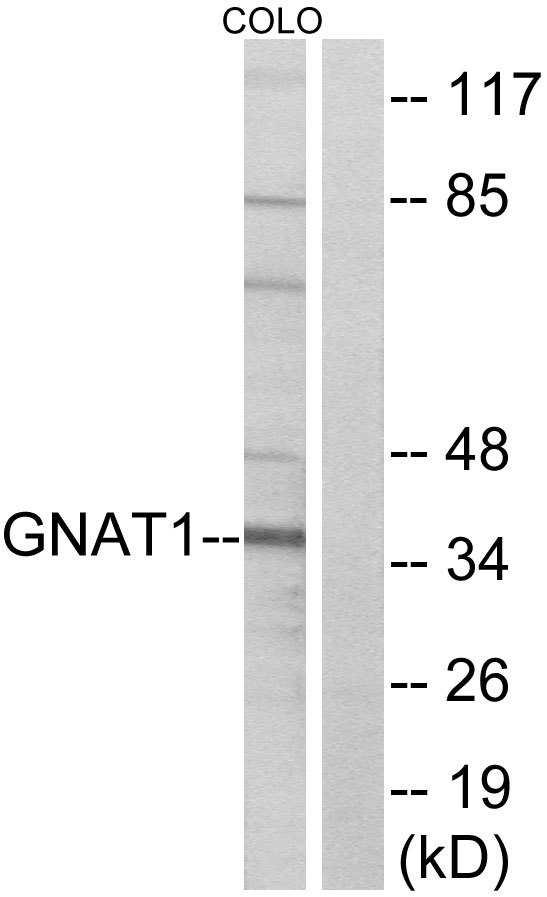
WB analysis of COLO cell lysates using GTX87657 GNAT1 antibody. The lane on the right is blocked with the synthesized peptide.
GNAT1 antibody
GTX87657
ApplicationsWestern Blot, ImmunoHistoChemistry, ImmunoHistoChemistry Paraffin
Product group Antibodies
TargetGNAT1
Overview
- SupplierGeneTex
- Product NameGNAT1 antibody
- Delivery Days Customer9
- Application Supplier NoteWB: 1:500~1:1000. *Optimal dilutions/concentrations should be determined by the researcher.Not tested in other applications.
- ApplicationsWestern Blot, ImmunoHistoChemistry, ImmunoHistoChemistry Paraffin
- CertificationResearch Use Only
- ClonalityPolyclonal
- ConjugateUnconjugated
- Gene ID2779
- Target nameGNAT1
- Target descriptionG protein subunit alpha transducin 1
- Target synonymsCSNB1G, CSNBAD3, GBT1, GNATR, HG1F, guanine nucleotide-binding protein G(t) subunit alpha-1, guanine nucleotide binding protein (G protein), alpha transducing activity polypeptide 1, guanine nucleotide-binding protein G(T), alpha-1 subunit, heterotrimeric guanine nucleotide-binding protein 1F, rod-type transducin alpha subunit, transducin alpha-1 chain, transducin, rod-specific
- HostRabbit
- IsotypeIgG
- Protein IDP11488
- Protein NameGuanine nucleotide-binding protein G(t) subunit alpha-1
- Scientific DescriptionTransducin is a 3-subunit guanine nucleotide-binding protein (G protein) which stimulates the coupling of rhodopsin and cGMP-phoshodiesterase during visual impulses. The transducin alpha subunits in rods and cones are encoded by separate genes. This gene encodes the alpha subunit in rods. This gene is also expressed in other cells, and has been implicated in bitter taste transduction in rat taste cells. Mutations in this gene result in autosomal dominant congenital stationary night blindness. Multiple alternatively spliced variants, encoding the same protein, have been identified. [provided by RefSeq, Feb 2009]
- Storage Instruction-20°C or -80°C,2°C to 8°C
- UNSPSC12352203
References
- Yao J, Jia L, Feathers K, et al. Autophagy-mediated catabolism of visual transduction proteins prevents retinal degeneration. Autophagy. 2016,12(12):2439-2450.Read this paper





